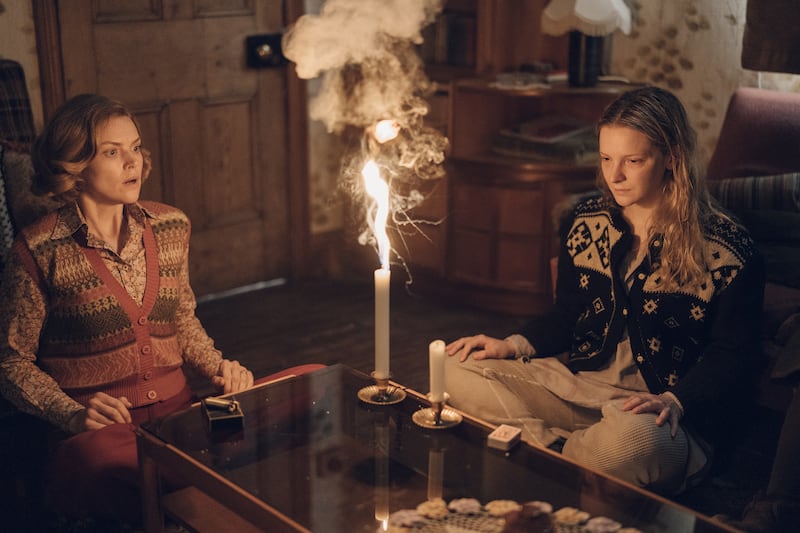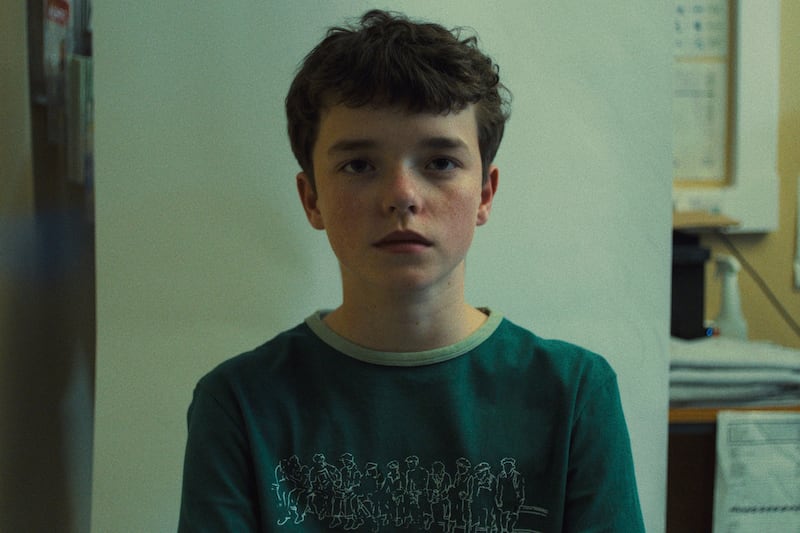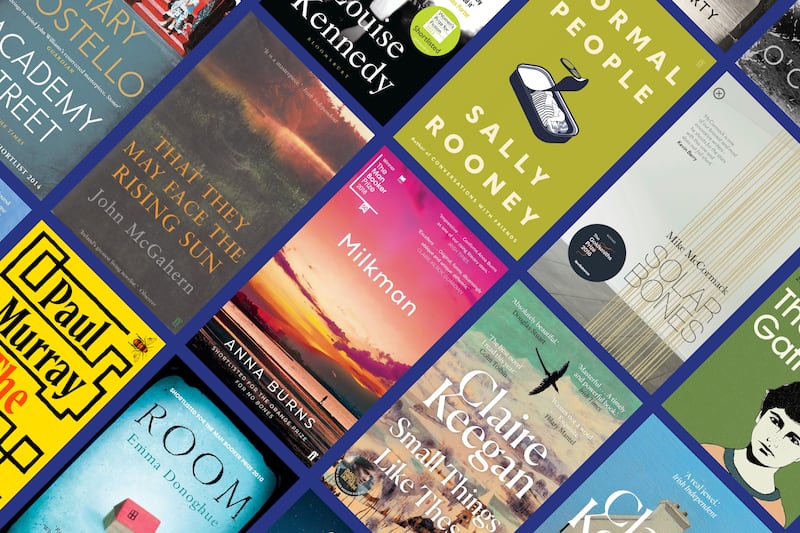I wonder if we are all getting a bit antsy about the words “folk horror”. When, in the 1970s, audiences shuddered at The Wicker Man and Blood on Satan’s Claw they didn’t know those films were part of a subgenre. Over the past 20 years or so the term has, however, become close to unavoidable. If someone gets scared while covered in mud on a country lane, then it’s folk horror. Many of Ben Wheatley’s films fit the bill. Ari Aster’s Midsommar and Alex Garland’s Men also meet the definition. Maybe the term had become a little too prevalent.
“Maybe a little bit,” says Daniel Kokotajlo. “I think quite often it’s used in a negative context these days. ‘Oh, it’s a folk horror.’ As if that means it’s not going to be exciting – or a big, loud kind of horror film. It’s shorthand for something negative. I just wish there was more space for different kinds of storytelling.”
Kokotajlo’s Starve Acre, one of the best horror films of the year – in a good year for horror films – is doomed to get lumped into the category. Based on a much-admired novel by Andrew Michael Hurley, the picture casts Matt Smith and Morfydd Clark as a couple, living in a remote corner of Yorkshire, who fall in with the old magic following the death of their son. It’s not just that it involves muddy holes, suspicious yokels and a possessed hare. The film is conspicuously set in the 1970s: the time when folk horror really took off. It has the look of TV works written by Nigel Kneale, such as The Stone Tape and the later Quatermass serial. Kokotajlo wasn’t even born then.
“I knew the 1970s through TV and stuff,” he says in his gentle Manchester accent. “I grew up watching that. So I’ve always felt nostalgic for it. That’s why this was exciting. I get to make something that I used to love watching when I was a kid. This plays into the nostalgia in the book. The whole point of the story was about looking back at things to try and find comfort – where, instead, you find something dark and disturbing.”
He admits that the casting of Matt Smith – hulking and grim here – was not unconnected to his interest in 1970s pop culture.
“I was aware of the Nigel Kneale aspect of it,” he says. “And how things like Quatermass was a precursor to Doctor Who. And on some conceptual level it was interesting to have Matt here, who was synonymous with Doctor Who, in this 1970s world.”
Kokotajlo, who is of Italian and Ukrainian stock, has had an interesting route to this place. He studied textiles at Manchester University and went on to experiment in painting and hip-hop. He then became interested in British cinema and drifted towards a master’s degree in screenwriting at Westminster University. He made a short film that played well at festivals and then embarked on one of great British debut features of the current century.
Apostasy, released here in 2018, tells the story of a young women’s estrangement from her family after she goes against the precepts of the Jehovah’s Witnesses. Kokotajlo was himself raised in that denomination, and the film, though even-handed, reveals unsettling truths about its cultish nature. There was inevitably some controversy at the time of release. I wonder if there have been any tussles in the aftermath.
“There weren’t any legal problems,” says Kokotajlo, who left the organisation decades ago. “We were very careful about all that making the film – about what we could get away with. I think the Watchtower [a Jehovah’s Witness magazine] did release statements on the film, telling people not to watch it. I had reports of witnesses standing outside cinemas where the film was on, handing out their literature to try and combat it.”
But the film also changed a number of minds.
“I mean, there’s lots of positive stuff as well,” he says. “There were these witnesses turning up to screenings to see what it was all about, to help them see a different side of things. It still goes on about Apostasy. I am always getting messages from people. I still get quite a bit of hate mail.”
The film received ecstatic reviews, but it did not get the awards attention or box-office returns it deserved. After that, Kokotajlo embarked on another personal project, but midway through he realised he couldn’t go through all that again. “Apostasy took it out of me,” he says. “I wanted to move into a different sort of space – something that has a magical element to it.”
Andrew Michael Hurley has, since the publication of The Loney 10 years ago, emerged as a singular novelist of the macabre. Starve Acre, his third book, managed the tricky business of appealing to literary and genre sensibilities. Kokotajlo’s producer Tessa Ross mentioned the novel, then not yet published, to him, and, after reading a promo copy, he became hooked on the notion of an adaptation. Would it be reductive of me to suggest connections between Starve Acre and Apostasy? The horror film finds its protagonist being sucked into ancient beliefs about folk deities. Both projects are, in very different ways, about irrational belief systems.
“I wasn’t really aware of it at the time,” he says. “But, looking back, you can see there are similarities. They’re both about grief and how people close down the natural grieving process. Sometimes you need something else to hold on to – a kind of religion or a spiritualism. That affects the grieving process. It has strong effect on denial and acceptance. It stops you accepting the truth of things.”
He smiles a wry smile.
“A lot of film-makers do that, right? There are things that they obsess over and they end up making the same film over and over again without realising it.”

Kokotajlo is most certainly not doing that. Despite the thematic similarities, few would guess that Starve Acre came from the same man who made Apostasy. It seems to have been pulled from the ground with soil still clinging to its roots. Smith gives us a robust man sent haywire by loss. The couple’s relationship is tested as they seek unorthodox ways of processing the tragedy. In that sense, it has flavours of Nicolas Roeg’s Don’t Look Now, but harder, messier, colder. A reanimated hare plays a key role. What is it about the English countryside that inspires such stories? Is it the sense of faiths and beliefs pressed down first by Christianity and then by modernity? You get a bit of that in Ireland as well.
“There are still remnants of the ways of old in the English countryside,” he says. “You can still come across stone circles and other relics or statues. You can go to an old church and see the ‘green man’ carved into a door. You can see the ‘three hare’ symbol above a doorway. Even now we don’t know what it means. There is that side of us that keeps us questioning what the landscape meant.”
The English north country seems particularly suited to this sort of tale. True, Cornwall has a certain eerie quality. The Hebrides gave good ick in The Wicker Man. But the vast windblown moors of Yorkshire and Lancashire have an unease all their own.
“It’s also something to do with that proximity,” the director agrees. “Within five minutes you can be in the centre of Manchester and then you can be in these landscapes. You just feel like you’re in a wilderness. You are in an abyss. Something about the closeness of it. You don’t get that in America.”
It is to be hoped we won’t have such a long gap between Kokotajlo’s second and third films. Which is not suggest it is particularly odd for a director to take six years between features. Projects pop up and then vanish. But those of us who were knocked back by Apostasy felt it would surely lead more quickly to a comparably fine follow-up. Was his team disappointed that the film didn’t break out more?
“At the time we felt that,” he says. “Apostasy was a weird one. Because I get so much love for it. People say it’s remarkable and fantastic and all this. But people weren’t really saying it at the time.”
Kokotajlo shrugs shoulders in his fatalistic way.
“I’m happy that people feel that way about it now.”
Starve Acre is in cinemas from Friday, September 6th





















